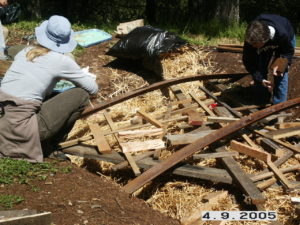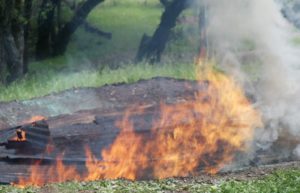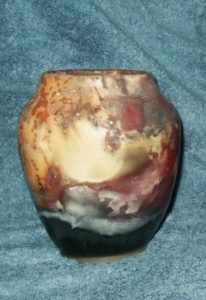
Pit Firing is the oldest known method for the firing of pottery. Ancient peoples used these pots for cooking, storage of water, grains, and all kinds of materials, as well as sculptures and religious figures.
Pieces are formed (wheel thrown or hand built) and burnished to a satiny smooth finish. They are unglazed and fired at lower temperatures than most other pottery.

Pots are then nestled together in a pit in the ground with combustible materials such as wood shavings, leaves, sawdust, straw and dried manure. The top of the pit is then layered with larger pieces of wood and covered with metal baffles. The filled pit is then set on fire and minerals and salts are tossed into the flames. Then the fire is carefully tended until most of the inner fuel has been consumed. At around 1,500-2,000°F, the maximum temperatures are moderate compared to other techniques used for pottery. After cooling, pots are removed and cleaned to reveal patterns and colors left by ash and salt deposits. Pots may sometimes

be waxed and buffed to create a smooth glossy finish.
Pit fired pottery is unglazed and fired to a low temperature, therefore it is porous and not watertight. The colors developed on Pit Fired pottery are not fused in a glass, as they are in a glaze. In many ways these pots should be thought of as a painting created by fire and smoke. Their color could fade if placed in direct sunlight for long periods. Hand washing is recommended.